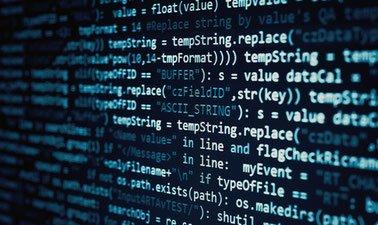MOOC List is learner-supported. When you buy through links on our site, we may earn an affiliate commission.

MOOC List is learner-supported. When you buy through links on our site, we may earn an affiliate commission.
A successful study of the course forms a holistic view of mathematical modeling algorithms and data structures for object description and the ability to use them in professional activity. A prototype of the program is being created for dynamic script execution. The basics of image processing are studied. An algorithm for dynamic programming in various problems is considered. The basics of client-server applications are discussed.
The course was created as part of the project on the modern educational program development provided by Ministry of Science and Higher Education (Russia).
What you'll learn
- A prototype of the program is being created for dynamic script execution.
- We study working with image files and the basics of image processing.
- An algorithm for dynamic programming in various problems is considered.
- The basics of client-server applications are discussed.
Syllabus
Introduction
History of mathematical modeling.
Basic algorithms and data structures.
Evolution of programming languages.
Lesson 1. Creating a prototype program for dynamic script execution.
1.1 Introduction of dynamic script execution.
1.2 Designing the user interface of MathPanel app.
1.3 Methods for logging and console output.
1.4 Dynamic compilation using C#.
1.5 A template for MathPanel scripts.
1.6 Handler for the « Image » button.
1.7 Polishing the prototype.
Lesson 2. Bitmaps and working with image files.
2.1 An example of slideshow.
2.3 BitmapSimple class – an array of ARGB values.
2.4 Saving a BitmapSimple to a file.
2.5 Loading a BitmapSimple from a file.
2.6 BitmapSimple with a gradient.
2.7 Adding noise.
2.8 Grayscaling and smoothing.
2.9 Filterind and Sobel-filter.
2.10 Working with alpha-channel.
Lesson 3. Method of dynamic programming.
3.1 Implementing the text animation.
3.2 The task of optimal alignment of strings or objects .
3.3 How does the method of dynamic programming work ?
3.4 The code review.
3.5 Comparing two strings.
3.6 Comparing two text files.
3.7 Comparing arrays of objects.
3.8 Comparing image files.
Lesson 4. Drawing on html-canvas.
4.1 Html-canvas.
4.2 Introduction to canvas API.
4.3 Reviewing « graphix.js » library.
4.4 A simple test container for the library.
4.5 QuadroEqu class to simplify data preparation.
4.6 Drawing via script samples.
Conclusion
Modeling the movement of an absolutely elastic ball.
The simulation of cell colonies - the game «Life».
Event modeling (exit from the maze).
MOOC List is learner-supported. When you buy through links on our site, we may earn an affiliate commission.
MOOC List is learner-supported. When you buy through links on our site, we may earn an affiliate commission.
